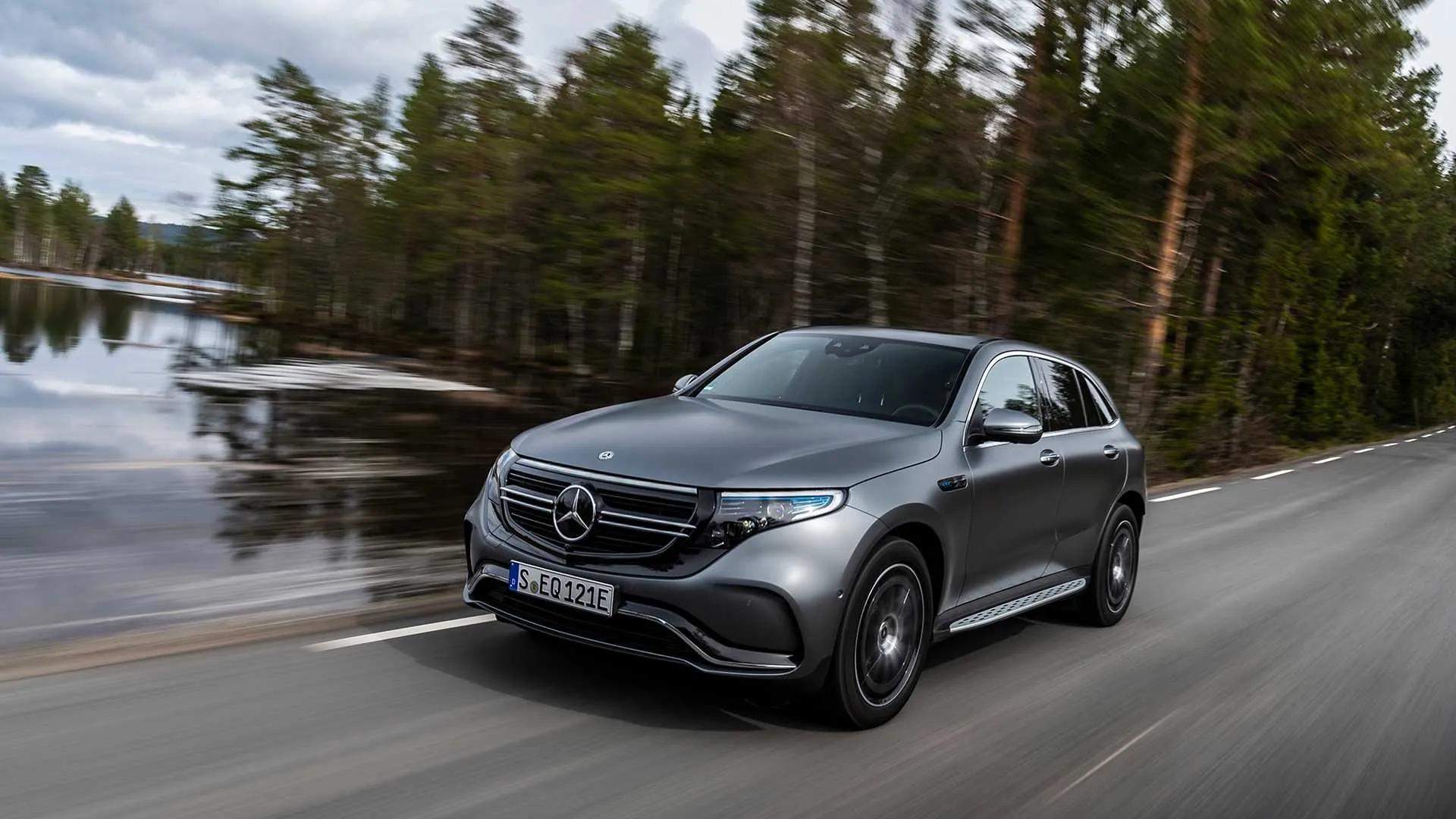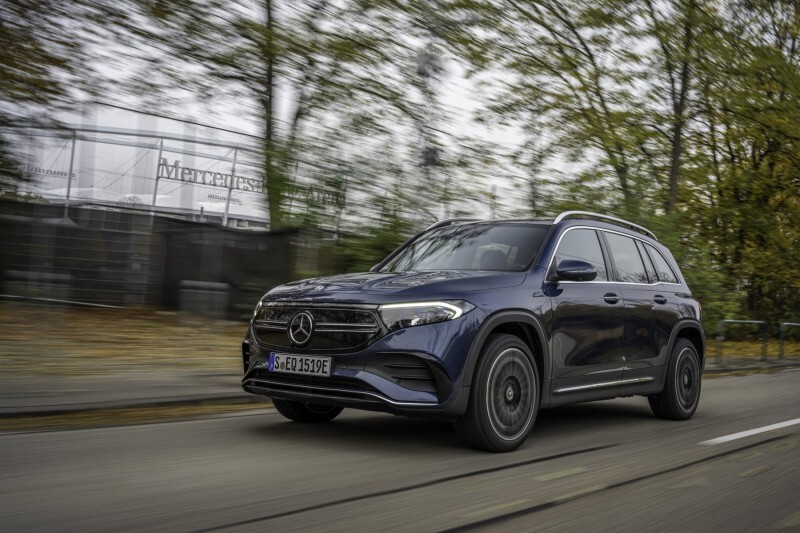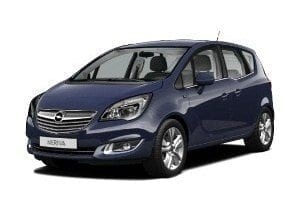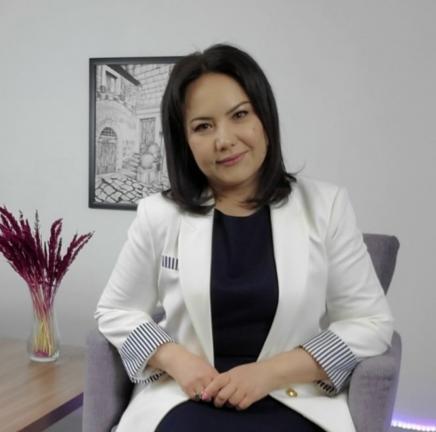
Mercedes EKV. Which versions to choose? How much does it cost?
Content
 Another SUV is coming to the Mercedes-EQ soon: the compact EQB, which offers space for up to 7 passengers. Initially, there will be two powerful drive versions to choose from: EQB 300 4MATIC with 229 HP and EQB 350 4MATIC with 293 HP.
Another SUV is coming to the Mercedes-EQ soon: the compact EQB, which offers space for up to 7 passengers. Initially, there will be two powerful drive versions to choose from: EQB 300 4MATIC with 229 HP and EQB 350 4MATIC with 293 HP.
Initially, the offer will include two strong versions with drive on both axles. In both cases, the front wheels are driven by an asynchronous motor. An electric unit, a gear with a constant ratio with a differential, a cooling system and power electronics form an integrated, compact module - the so-called electric power train (eATS).
The versions EQB 300 4MATIC and EQB 350 4MATIC also have an eATS module on the rear axle. It uses a newly developed permanent magnet synchronous motor. The advantages of this design are: high power density, consistent power delivery, and high efficiency.
On the 4MATIC versions, the driving force requirement between the front and rear axles is intelligently regulated depending on the situation - 100 times per second. The drive concept of the Mercedes-EQ focuses on optimizing power consumption by using the rear electric motor as often as possible. At part load, the asynchronous unit on the front axle only produces minimal drag losses.
The prices of the model start from PLN 238. The more powerful variant costs from PLN 300.
Specifications:
EKV 300 4MATIC | EKV 350 4MATIC | ||
Drive system | 4 × 4 | ||
Electric motors: front / rear | type | asynchronous motor (ASM) / permanent magnet synchronous motor (PSM) | |
Power | kW/km | 168/229 | 215/293 |
Torque | Nm | 390 | 520 |
Acceleration 0-100 km / h | s | 8,0 | 6,2 |
Speed (electric limited) | km / h | 160 | |
Useful battery capacity (NEDC) | kWh | 66,5 | |
Range (WLTP) | km | 419 | 419 |
AC charging time (10-100%, 11 kW) | h | 5:45 | 5:45 |
DC charging time (10-80%, 100 kW) | min | 32 | 32 |
DC charging: WLTP range after 15 min charging | km | up to approx. 150 | up to approx. 150 |
In coasting mode or when braking, the electric motors turn into alternators: they generate electricity that goes into a high-voltage battery in a process known as recuperation.
Mercedes EQB. What battery?
The EQB is equipped with a high energy density lithium-ion battery. Its useful capacity is 66,5 kWh. The battery consists of five modules and is located in the center of the vehicle, under the passenger compartment. The aluminum housing and the body structure itself protect it from potential contact with the ground and possible splashes. The battery housing is part of the vehicle structure and therefore an integral part of the crash protection concept.
At the same time, the battery belongs to the intelligent heat management system. In order to maintain the temperature in the optimal range, it is cooled or heated when necessary using the coolant plate underneath.
If the driver has activated the Intelligent Navigation, the battery can be pre-heated or cooled while driving so that it is within the ideal temperature range upon arrival at the fast-charging station. On the other hand, if the battery is cold when the car is approaching a quick-charge station, a significant portion of the charging power will initially only be used for heating it. This allows you to reduce the charging time.
Mercedes EQB. Charging with alternating and direct current
At home or at public charging stations, the EQB can be conveniently charged with alternating current (AC) up to 11 kW. The time it takes to fully charge depends on the infrastructure available. You can speed up AC charging using the Mercedes-Benz Wallbox Home charging station, for example.
Of course, even faster DC charging is also available. Depending on the state of charge and temperature of the battery, it can be charged up to 100 kW at a suitable charging station. Under optimal conditions, the charging time from 10-80% is 32 minutes, and in just 15 minutes you can accumulate electricity for a further 300 km (WLTP).
Mercedes EQB. ECO Assist and extensive recuperation
ECO Assist advises the driver when it is worth releasing the accelerator, e.g. when approaching a speed limit zone, and supports him with functions such as sailing and specific recuperation control. To this end, it takes into account, inter alia, navigation data, recognized road signs and information from assistance systems (radar and stereo camera).
Based on the road picture, ECO Assist decides whether to move with the least resistance or to intensify the recuperation. Its recommendations take into account descents and gradients as well as speed limits, road mileage (curves, junctions, roundabouts) and the distance to the vehicles ahead. It tells the driver when it is worth releasing the accelerator and at the same time gives the reason for his message (e.g. intersection or road gradient).
In addition, the driver can manually adjust the recuperation function using the paddles behind the steering wheel. The following stages are available: D Auto (ECO Assist optimized recuperation for the driving situation), D + (sailing), D (low recuperation) and D- (medium recuperation). If the D Auto function is selected, this mode will be kept after restarting the car. In order to stop, the driver must use the brake pedal, regardless of the selected degree of recuperation.
Mercedes EQB. Smart navigation for electric cars
Intelligent navigation in the new EQB calculates the fastest possible route, taking into account various factors, and calculates the charging stops itself. It can even react dynamically to changing conditions, e.g. traffic jams. While the conventional range calculator relies on past data, intelligent navigation in the EQB looks to the future.
The route calculation takes into account, among others vehicle range, current energy consumption, topography of the proposed route (due to electricity demand), temperatures along the way (due to charging duration), as well as traffic and available charging stations (and even their occupancy).
Charging does not always have to be "full" - station stops will be planned in the most favorable way for the total journey time: under certain circumstances it may happen that two short recharges with more power will be faster than one longer.
The editors recommend: SDA. Lane change priority
If the range becomes critical, the active range monitoring system will advise you, such as "turn off the air conditioning" or "select ECO mode". Additionally, in ECO mode, the system will calculate the most effective speed with which to reach the next charging station or destination and display it on the speedometer. If the adaptive cruise control DISTRONIC is activated, this speed will be set automatically. In this mode, the car will also switch to an intelligent operating strategy for auxiliary receivers in order to reduce their energy requirements.
A route can be planned in advance in the Mercedes me app. If the driver later accepts this plan on the car's navigation system, the route will be loaded with the latest information. This data is updated before each trip starts and every 2 minutes thereafter.
In addition, the user has the option of individually adapting the intelligent navigation to his preferences - he can set it so that, for example, after arriving at the destination, the EQB battery charge status is at least 50%.
See also: Peugeot 308 station wagon

